With hiring strategy at an inflection point, sourcing the right talent is in the spotlight. Given the short supply of talent, the employee-employer equation has changed drastically. As sourcing high quality talent becomes increasingly difficult, here are some talent acquisition strategies to help you nail the effort.
Why is hiring for culture fit in the limelight today?
It is because culture – and its corollary culture fit – is the one key factor that keeps an organization and its people together. It not just makes an organization stand out in attracting the top talent but it is also the common thread running through employee engagement, productivity and growth.
No wonder then that all eyes are on hiring strategy and hiring for culture today, as the battle for talent gets fiercer by the day. According to data released by the US Bureau of Labor Statistics, in June 2022, the number of job openings totaled 10.7 million, while the job openings rate rose in establishments with employee strength of 1,000-4,999.
Why is company culture fit in the spotlight?
Amid the changes in the macroeconomic environment, hiring strategy is undergoing a tectonic shift with determining cultural fit in the workplace emerging as a key tenet. Digitalization is progressing rapidly, creating pressure on organizations to catch up. There’s the rise of a new generation in the workforce that has high expectations and values seamless experience over any other parameter. The rise of social media has significantly altered the dynamics of recruitment as well as hiring strategy. From the employer’s perspective, too, who qualifies as the right candidate has changed. The days of linearity and hierarchy are over, replaced by a phase where engagement is round-the-clock and continuous.
Given the transformation of the work environment and workforce, coupled with the re-evaluation of processes, culture fit has emerged as one of the most important facets in hiring and recruitment today.
It essentially refers to knowing how far the potential candidate and the prospective employer are aligned in their outlook and attitude, and understanding to what extent does the former believe in the company’s mission or is aligned with its overall culture, represented by leadership, communication style, processes, habits, workforce composition, etc.
Why is cultural fit important?
Cultural fit in the workplace matters a lot.
According to Company Culture Statistics: Leadership and Engagement in 2022, by TeamStage, nearly 46% of job seekers consider company culture an important factor, with close to 95% of entrepreneurs and 85-90% of job seekers citing healthy culture at work as critical to success. Interestingly, the public image of a company has a great bearing on its ability to attract or retain employees. More than 85% of candidates looking for jobs will rather stay away from companies that have a bad reputation, while nearly 65% will prefer to move on to a different organization if the reputation of their current employer takes a beating.
What are the benefits of hiring for culture?
High overall growth for the employee and company: Data shows that having a highly engaged workforce can drive a nearly 200% increase in performance. The reason is that employees that are a cultural fit in the workplace don’t just have more confidence but also feel motivated to strive, to take on challenges and shoulder new responsibilities. Moreover, engaged employees bring fresh perspective to the team. Overall engagement resulting from employees being company culture fit can take productivity several notches higher, while a culture where high-caliber employees thrive, as per data, can record close to 35% growth in revenues. This, therefore, makes a strong case for hiring for culture fit.
Lower attrition: Retaining employees as part of an effective hiring strategy is a key challenge for companies worldwide, and as per data, nearly 60% of companies in the US are struggling on this front. Employees who are not a cultural fit in the workplace are more likely to move on over the short term. Now the implications are both costly and disruptive. Financially, going by various studies, replacing a salaried employee can cost 6-9 months of the individual’s salary. It is disruptive because it breaks morale, can damage a company’s reputation depending on how the concerned employee chooses to express his opinion on social platforms, and hurts productivity.
Higher job satisfaction: Job satisfaction is critical to performance, and being a cultural fit in the workplace has a direct impact on performance. A workplace culture survey conducted by Eagle Hill Consulting showed that more than 60% of employees believed culture had a tangible impact on the success of an organization. Between 75% to 80% of workers in the US alone believed that culture influenced their productivity, efficiency and ability to serve customers. Culturally-aligned employees are likely to be more committed to the organization’s goals and work in line with its practices.
Considering the impact of having an employee who is a wrong cultural fit,and the need to build a socially-cohesive organization by hiring for culture, it is imperative for companies to get candidate assessment right as part of an effective hiring strategy. So even if a candidate may have the skill but is not a company culture fit, there are greater chances that the individual will not perform optimally.
How to hire for culture fit?
You need to revisit your hiring strategy and skew it toward hiring for culture by taking the following steps:
Begin with self-assessment
As an organization, you must analyze your company culture and understand who will qualify as a company culture fit. Only once you have clarity will you be able to aim for the right fit. So, are your recruiters or HR themselves aligned with the internal culture? Is everyone equally aware of the values, objectives and goals, style of communication, daily practices, etc.? Does everyone understand why is cultural fit important? It is imperative for the leadership to invest in building the culture that is aligned to their goals.
The other aspect of self-assessment in hiring for culture fit is that it will help you to address internal anomalies and undertake cultural transformation. A recent example is Google. The company’s hiring process is known to be painfully long and intimidating. When it was understood that the unending interviews in hiring had become a pain point to the extent that this was preventing candidates from considering the company, Google reportedly changed its hiring process radically.
Factor in remote working. This may require you to make certain changes in culture and accommodate people as per their needs.
Eliminate bias. Be methodical in your approach and avoid intuition or preferences. Pre-defined benchmarks, interview scorecards, and equitable and culturally responsive assessment tests are effective in avoiding biases. You could consider employing these while assessing hiring for culture.
Working along these lines will help you to answer how to hire for culture fit.
Understand the candidate
When hiring for culture, use the most effective psychometric tests and draft the right company culture fit questions around motivation or behavior to:
Know the candidate: their history, challenges on the personal and work fronts, ability to deal with such challenges
Understand their inclination: the type of organizational setup that would appeal to them – collective or one where people work in silos
Facilitate self-assessment: to help the candidate assess what they think about your organization and whether it is the right fit for them or not
Use technology to empower recruitment practices
HR technology has changed the game of recruiting. AI-powered solutions are increasingly being used for adverse media screening, digital reference checks, etc. Background screening, irrespective of the type of engagement of the staff – permanent, remote, contract, part-time or full-time – is a must for the protection of the interests of the company and customers as well as for compliance. Plus, it helps in assessing how culturally fit a potential candidate is, and is therefore a key component in hiring for culture fit.
With the help of technology, checks can be run online, quickly and efficiently, and the candidate can be kept posted throughout the process. This ensures seamless experience which also helps in forming the right impression of the company on the candidate.
Streamline onboarding
Onboarding is the first stage of an employee’s lifecycle. Therefore, it needs to be robust to ensure effective integration of an employee in the organization’s culture. The other half of onboarding is to have an effective loop of feedback to facilitate two-way communication which is important for continuity. Moreover, onboarding as a process speaks for the brand of the company. This is because it gives the first taste of what a company’s culture is. Considering that the workforce today is highly proactive in self-assessing what a company is all about and whether they are the right fit for that organization, a streamlined onboarding process is the first step in conveying the culture.
Discussions both pre- and post-hire are equally important in conveying what the culture of a company is and to determine the suitability of the candidate from the company culture fit perspective. It actually works both ways: while employers get to know the candidate, a candidate also gets to understand the place prior to and immediately upon joining it. It is therefore very important that during each discussion, the company’s culture is conveyed clearly. This could include opening conversations with the company’s mission and vision values, giving clarity on workload and timing or work-life balance, explaining opportunities for development and growth, and very crucial, asking for the candidate’s opinion/feedback. This helps in setting expectations right from the start for both parties and each side can figure out accordingly.
Lastly, given the stress associated with joining a new organization, having an efficient onboarding process provides the cushion to help employees settle down in their roles effectively. This would include sending the employee kit at least a day before the employee joins, having checklist templates, spreading out the cumbersome paperwork required to be done, conveying just the right amount of information through spaced out emailers to prevent an overload, etc.
Is company culture fit the best way forward then?
Caution is warranted when attempting to find answers to the questions: why is cultural fit important and how to hire for culture fit?
Despite the pros of company culture fit, the hiring strategy is also being challenged. The discrepancy arises from the very concept at its core – homogeneity of thinking when people are aligned culturally, for instance, speak the same language and share the same interests and hobbies.
The questions are: Is homogeneity not in conflict with diversity? What about inclusion? Is company culture fit antithetical to inclusion?
Hiring only from the perspective of culture fit can lead to cognitive biases, wherein under the pretext of culture fit, there could be discrimination against those who may be different.
Is favorable treatment then the reason why people that are culturally fit do well? Does the preferential approach give them added confidence?
The main criticism against company culture fit therefore arises from the possibility of discrimination ingrained in it, which adversely affects diversity in the workplace. This is because defining who is a right culture fit is often subjective, and biases consciously or unconsciously tend to creep in.
Moreover, refusing a candidate on the ground that the person may not be able to fit well culturally in the organization does not seem that convincing, especially if the candidate is otherwise high on skills. Not only does it sound vague, it is also demoralizing, specifically against the backdrop of sexism, racism or agism.
Critics of cultural fit in the workplace approach believe that an organization should be flexible and adapt its culture as per the changing environment, rather than rigidly sticking to any fixed notion of culture. Research shows how change in culture contributes to innovation, which hinges on novelty. A better way forward would then be to hire in alignment with the direction a company wants to move, welcoming new and diverging values.


